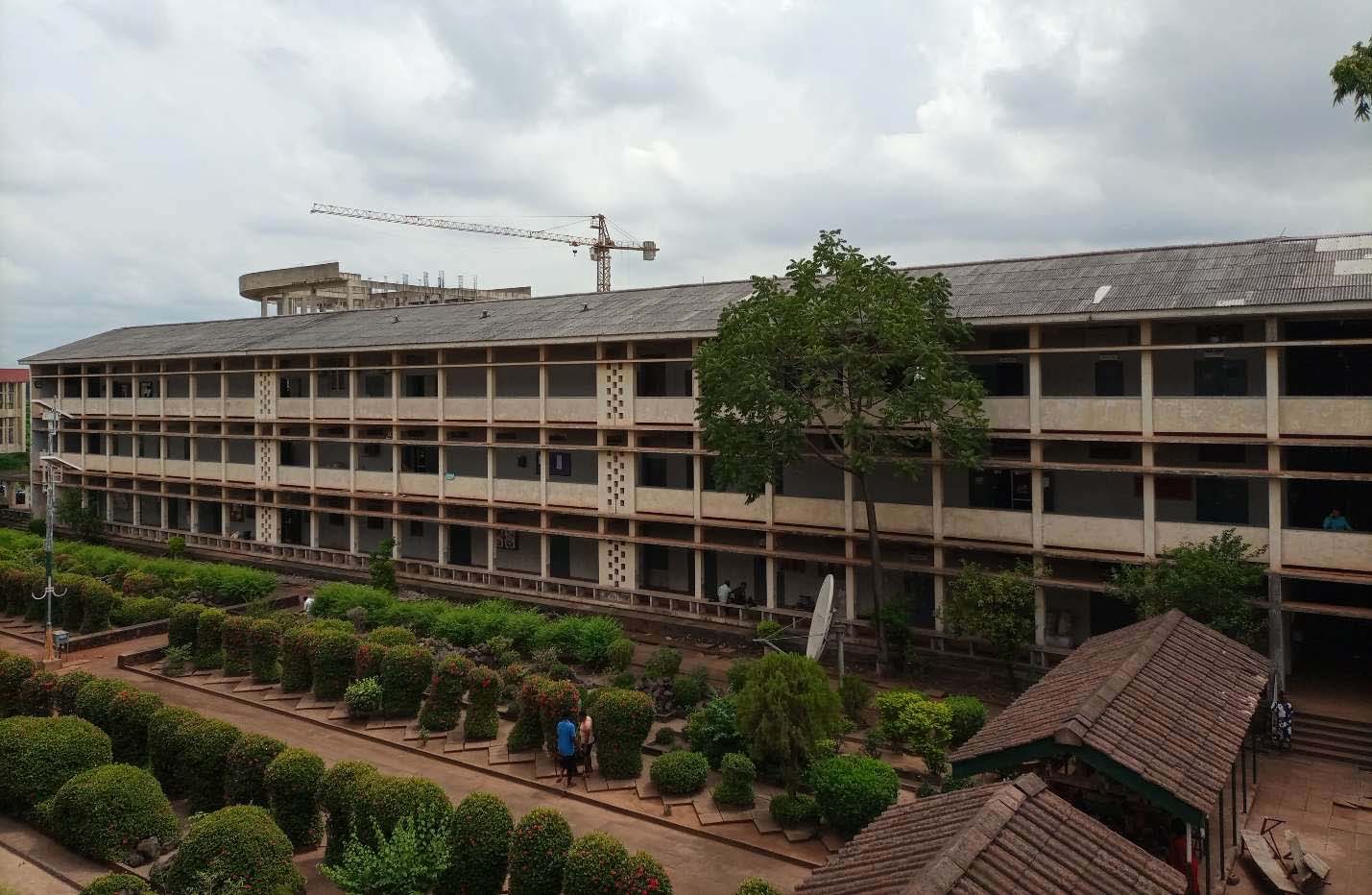Lagos Building, University of Nigeria Enugu Campus
AN IMPARTIAL VIEW OF ‘FAIR’ OR ‘FARE’
The structure which formerly serve as the College of Arts and Technology building, now christened ‘Lagos Building’ is one of the most historic and earliest building to be erected on the University of Nigeria, Enugu Campus site. Apparently of a rich history, the now faded cream-coloured building popularly known for its lush and vibrant evergreen garden which adorn its landscape or open courtyard is one of the most beautiful scenes on the campus, so graceful that it was nicknamed “the Love Gardenâ€. Its unsure whether the change of name makes up for the change of face, though the building still asserts itself in the environment where it is sited, as a building that draws the attention of whoever passes by it.
One of the most alluring things about this structure is the façade elements in its rhythmic nature, the elements are harmonious so much that it conveys a sense of absolute perfection in its construction, pulsing and metrically in graceful alignment. Safe to say that the lack of proper documentation poses a dent on its seemingly rich modernist history. The exact date of its construction and completion were not known, as no account of the historical event surrounding its construction were found in the archives. From the interviews conducted and information gotten from some sources, it is assumed that the structure must have been built between the early 1960’s to Mid 1960’s. Sadly, that is all there is to it. It only brings to my thought why it is important that we keep good, precise and accurate records of buildings and monuments we have in around in our time so that the generation unborn will have something to fall back when need arises.
A two-winged structure, with one being a mirror of the other, separated by a beautiful landscape view and somewhat connected by a long but not-too-wide concrete covered pavements and walkways on both ends, the building is being flanked on its rare sides by asphalt tarred roads and mid-height bloomy trees. The elongated building with its less broad width contains rows of rectangular classrooms, offices, laboratories and also conveniences, just to mention a few. The now washed-out, achromatic two-storey structure still imposes itself as grander and taller character in the surrounding. Crowning the two-wing structure is the stone-tile gable roof construction, old fashion but without any feeling of oddness, the roof is perforated at strategic points with vertical channel of pipes protruding out assumed to conducts smoke and combustion gases from the laboratories below, the washed-out concrete coverings above the walkways linking the two structures only on the ground floors stills looks strong as if it were made of impeccable material, the paints only being washed by the constant and consistent downpour while also being heated by the scorching sun.
There is an obvious and intentional use of vertical and horizontal elements on the building facade, though simplistic in nature, it could only best describe the architecture of the time in which the building was constructed, it was during the era when Modern Architecture was prevalent. The long narrow windows were arranged in a consecutive and repetitive straight-line manner, just like the ray of the morning sun. It creates a pattern that evokes a sense of fulfilment and only divided by the thin horizontal layer of concrete element, few inches thick, it creates a sense of flow and connection while it also shades the interior spaces from the scorching sun.
This only explain why the interiors are always seemingly cool and serene, well-lit and at the same time properly ventilated. The long simplified vertical columns break the long wide range of corridors into bits of rectangular boxes that opens to the supposed courtyard on the approach view, it not only allows one enjoy the fascinating landscape composition but also providing unwavering support for the building in their numbers. The evident use of reinforced concrete helps creates an encapsulating visual expression that best describes the building’s applied use of the principles of art. All in their orm while being allured and endeared to the scene. The landscape although best enjoyed when viewed from the top, can be said to be the best landscaped building in the university community.
Currently, the building serves as the faculty building for the faculty of environmental studies, accommodating majority of the departmental offices and the faculty office, while it also houses the school of Post Graduate Studies. This could only but tell you of the importance of this building. As a student of Architecture, I’ll say it’s pertinent for Architects, designers, environmentalist and other professionals that are related to building industry to always keep an accurate and detailed record of their works and designs, so that it gives the future generation a view of what is in the mind of the Architect or designers. And also, the need to develop concise writing skills that gives best account of the story of such buildings that is designed and built in the present, because they might turn out to become tomorrow’s monuments and masterpiece. Also is the need to keep the old structures in good shape and proper maintenance of the ones that are built. With the occasional daub of paint on the approach view of the Lagos building from the garden while the sides and rare views were left in shades of their washed monochromatic colours, one could only but wonder if it is a tale of impartial view of ‘fair’ or ‘fare’.


